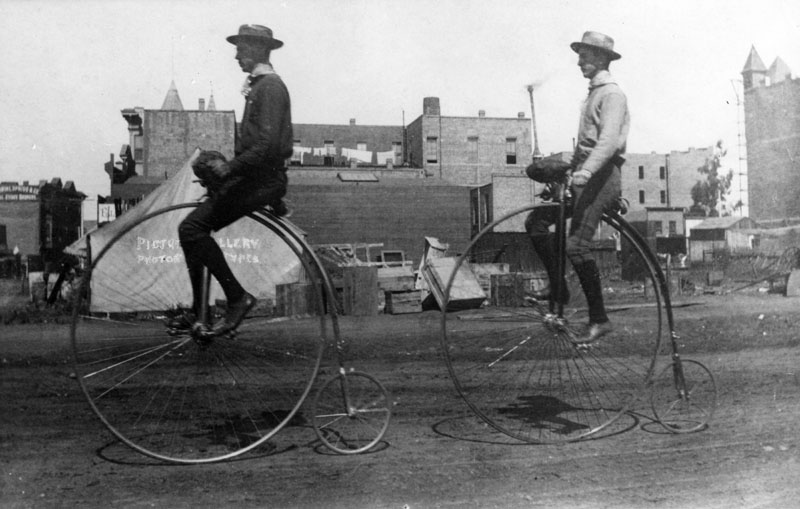Being a bicycle lover, I sometimes nerd out on all things related to bicycle history. My bookshelf at home has an impressive bicycle section containing hundreds of photographs and articles detailing old-fashioned bikes. When cruising through one of my heavy coffee table bicycle books last weekend, I found a beautiful picture of a penny-farthing. Like any modern-day bicycle enthusiast, I was amazed at the fact that people used to ordinary ride such a mechanism. With its humungous front wheel and tiny rear wheel, it was quite a curious mode of transportation. Intrigued, I set out to research the history of the penny-farthing.
In 1869, a Frenchman, Eugene Meyer, invents the first “high wheeler,” also known as the penny-farthing. The main purpose of this invention was to make bicycles faster. Although Meyer invented what is known to be the first version of the penny-farthing, a Brit named James Starley perfected and became famous for the design in 1877.
Penny-farthings grew popular in the late 19th century due to the speed they could achieve because of the large front wheel. They could reach speeds up to 40 kilometers which was much faster than the older bicycles of that time (called boneshakers). However, penny-farthings were difficult to manipulate due to the fact that riders had to take a running start to mount the bicycle and a jump off to dismount. Serious accidents were common, often involving major injuries or death. Due to the size of the penny-farthing, hitting objects in the road and flying over the handlebars was a frequent occurrence. When this happened, the incident was known as “taking a header” or “coming a cropper.”
Even Mark Twain recalled a comical account of an unfortunate time he had on his penny-farthing:
“When you have reached the point in bicycling where you can balance the machine tolerably fairly and propel it and steer it, then comes your next task — how to mount it. You do it in this way: you hop along behind it on your right foot, resting the other on the mounting-peg, and grasping the tiller with your hands. At the word, you rise on the peg, stiffen your left leg, hang your other one around in the air in a general and indefinite way, lean your stomach against the rear of the saddle, and then fall off, maybe on one side, maybe on the other; but you fall off. You get up and do it again; and once more; and then several times.
By this time you have learned to keep your balance; and also to steer without wrenching the tiller out by the roots (I say tiller because it is a tiller; “handle-bar” is a lamely descriptive phrase). So you steer along, straight ahead, a little while, then you rise forward, with a steady strain, bringing your right leg, and then your body, into the saddle, catch your breath, fetch a violent hitch this way and then that, and down you go again.”
During this time, penny-farthings – also known as ordinaries or high wheelers now – were only for the upper middle class and high society. Many bike clubs in Britain were extremely picky when it came to who they admitted. All members of leagues needed an official recommendation by a current member and a costly uniform.
In 1878, Albert Pope began to manufacture the Colombia bicycle and did so successfully for two decades in America. After this, the penny-farthing trend died down and gave way to a model that more closely resembles the modern bicycle.
The penny-farthing is now a symbol of the Victorian era and an important piece in the launching of bicycling as a sport. I, personally, am intrigued by them and hope that I get to ride one someday!
(sources: Wikipedia, Crazy Guy on a Bike)

